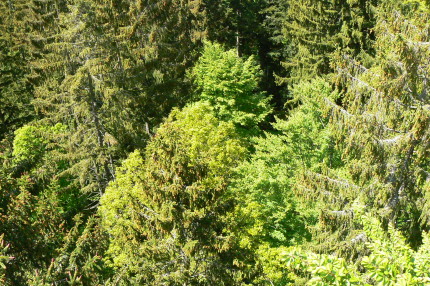Sustain forest diversity
The importance of forest genetic diversity for our environment
Why genetic diversity in forests matters
What do you see when going for a walk in the forest? Depending on the season of the year you will find colorful leaves, blossoming flowers, wild animals, mushrooms and herbs. Every forest ecosystem is different in its composition and function. Forests are suppliers of drinking water, wood for timber construction and fuel, are important carbon storages and areas used for recreational activities. The services forests are providing are depending on the biological conditions of the ecosystem. Crucial for the stability of the environment is the vitality of stand forming trees. To sustain the many benefits forests offer, tree diversity and the adaptive capacity of ecosystems are highly important.
This is particularly relevant in times of climate change. Trees are not able to move into more favorable environments, but have to face the global warming within 1-2 tree generations.
The knowledge about genetic diversity within trees is known for more than 250 years and since then helps practitioners to manage forest ecosystem sustainably.
Current threats
Taking a walk in the forests in 100 years from now, you will likely discover significant changes in plants and animals composition. Changing environmental conditions, such as increasing temperatures, have a strong influence on tree species distribution. Thus, present forests are endangered by a variety of abiotic factors, i.e. changing perception patterns and increasing frequency of drought events, but also by new forest pests and diseases. Innovative methods are needed to enhance the adaptivity of natural areas, to make our complex ecosystems fit for climate change.
Forest reproductive material
FRM includes seeds, seedlings or vegetative propagules used in forest management for reforestation and to support natural regeneration of forests. Researchers are studying the adaptive processes that affect the genetic diversity of tree populations since many years. This knowledge is used to develop reforestation and regeneration guidelines for stable and productive forests. The conservation and use of adaptive FRM is a promising strategy to overcome climatic challenges.
In Europe about 1.5 million hectares of forests are managed for forest trees genetic conservation and seed production (State of Europe’s Forests 2015). Within the European Union marketing of FRM has to be in accordance to national legislation following the European Directive 1999/105/EC.

